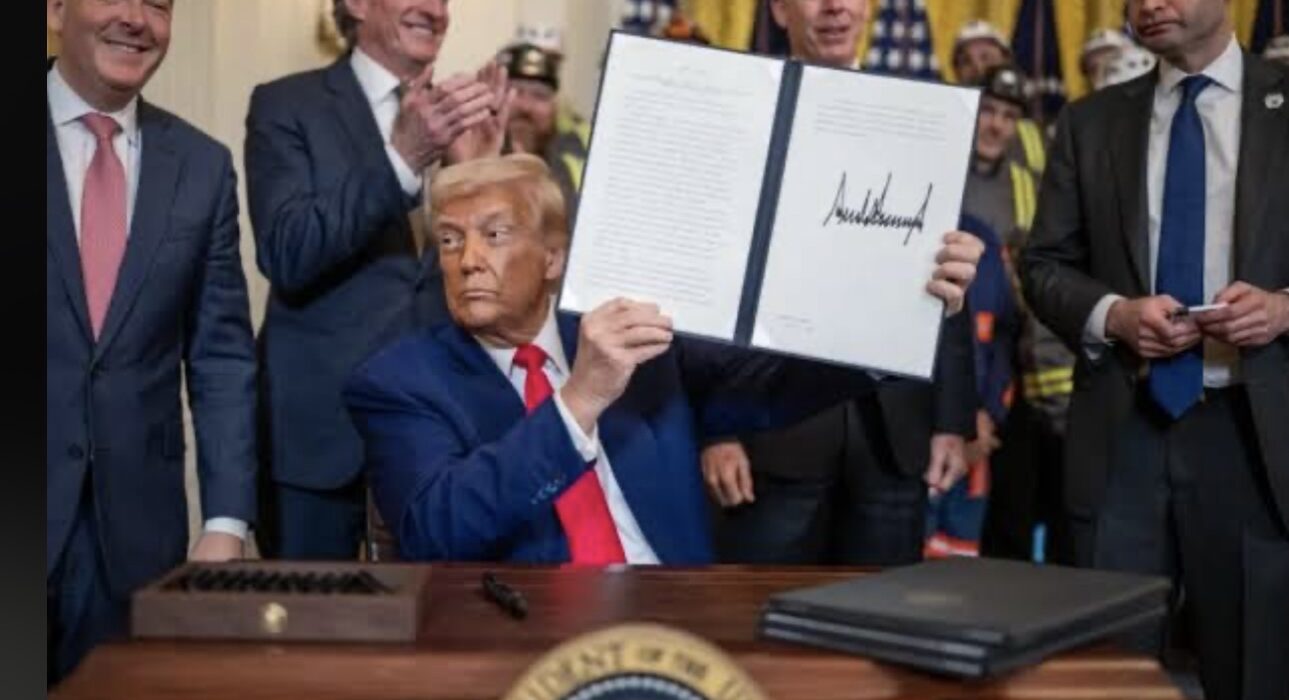President Trump Unveils Aggressive Trade Initiatives: 125% Tariff on China, 90-Day Halt for Other Nations

President Donald Trump made a series of announcements that fundamentally transformed the world of global trade relations. Among the major initiatives, Trump unveiled a 90-day halt in tariffs on the majority of nations, lowering the overall tariff rate from earlier highs of 25% to a lesser 10%.
But in a move sure to raise tensions with Beijing, the president imposed an unprecedented 125% tariff on Chinese imports, citing continued concerns over unfair trade and a desire for stronger action to protect U.S. industries.
The new tariffs come amid mounting frustration in the United States with China’s trade practices, which have been the subject of contentious disagreement in trade negotiations for decades.
Trump’s administration has long advocated more assertive tariffs to counter what it perceives as an unbalanced trade relationship with China, which has seen millions of American jobs outsourced and a massive trade deficit.
The 90-day tariff suspension will be a stopgap relief to nations and firms that had already been affected by previous tariffs, which varied up to 25% under previous policies of the Trump administration. The move is viewed as a measure to prod global cooperation and avoid further economic pressure in the midst of the global economy’s struggle to escape the effects of the COVID-19 pandemic and increasing fear of recession.
While the slashing of tariffs across most nations is significant, the retaliatory tariff on China is a quantum leap. At 125%, it is five times the previous high tariff under Trump’s “America First” trade policy. This level will prominently increase the price of Chinese products in the U.S. market, which could see the price of a variety of ubiquitous goods, such as electronics, clothes, and toys, increased at the consumer level.
The announcement has drawn a wide range of reactions from the U.S. trading partners. Though many embraced the 90-day pause, considering it as a chance to renegotiate terms of trade, China has already signaled that it could retaliate. Beijing has always warned against tariff imposition, claiming they harm American and Chinese consumers and disassemble global supply chains.
Other significant world partners such as the European Union have also indicated that the other trade measures may have wider trade policy implications. Global markets responded in volatility due to investors worried with retaliation opportunities in tariff activity and overall impact on them for future global trade.
On Wall Street, the news caused a brief surge in stock prices, with the S&P 500 increasing by 7%, though analysts recommend the volatility of the global markets remains a concern. “The market is reacting positively to the pause, but the uncertainty regarding the long-term implications of such tariffs cannot be overstated,” said Daniel Myers, a senior economist at the Global Finance Institute.
The 125% tariff on Chinese imports will be one of the most disputed aspects of this new trade policy. The overwhelming view among most experts is that the move will lead to a shocking increase in the prices faced by U.S. consumers, particularly in industries relying on products manufactured in China. Moreover, with the global economy itself already strained, the U.S. could well find itself being isolated in its trade policies as other countries may seek new partners outside of the U.S.
For Trump, this belligerent new trade strategy is a move to restore his credibility with American laborers, and particularly those that toil in manufacturing and other industries affected by cheap foreign goods. But critics of the policy argue that long-term consequences are bad for world trade and the overall economy of the United States.
While it’s clear President Trump is leveling the playing field with aggressive methods, his actions will not succeed if they lead to further retaliation or interfere with critical global supply chains,” said Linda Harris, a former trade advisor to the Obama administration.
As the 90-day break comes into effect, only time will tell what global markets and international relations have in store. Will the temporary reprieve in tariffs provide the space for genuine negotiations, or will it simply continue to ratchet up tensions? The coming months will likely give us the answer as Trump’s administration seeks to rebalance the U.S. trade environment in an attempt to get better terms out of China and other giant economic allies.
For the time being, companies globally will be closely observing, adapting to the new trade dynamics that will redefine the global economy in the years to come.









